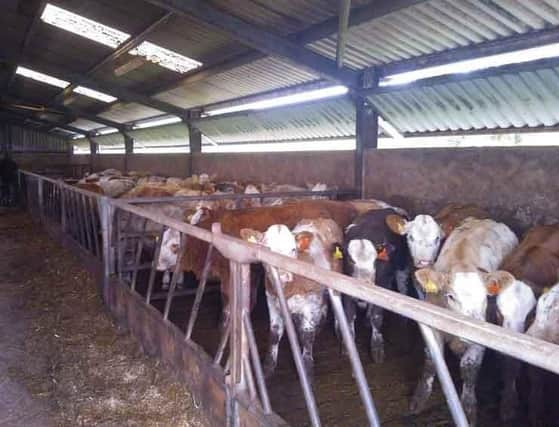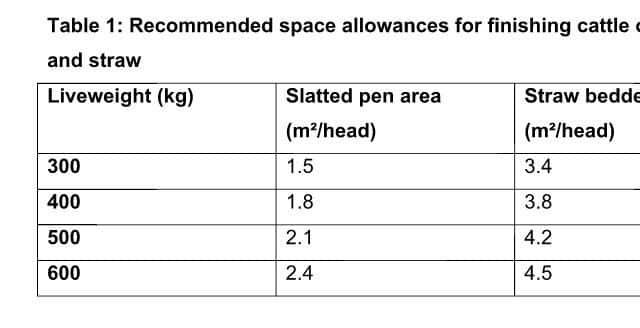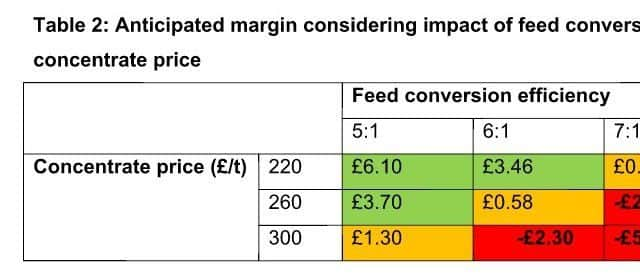DAERA Management Notes: Beef and sheep


Producing clean cattle for slaughter is important as it reduces the risk of food poisoning from E coli. What can be done at farm level to help produce clean cattle? The following are a few areas to consider:
l Feed dry matter (DM) affects the DM of the faeces. The wetter the faeces the more risk of contamination. Diets containing high levels of roots or silage are likely to have lower DM than ad lib concentrate diets.
Advertisement
Hide AdAdvertisement
Hide Adl An excess of minerals can cause mild scouring, for example sodium can cause excessive urine production. To avoid this use an appropriate well balanced mineral.


l Unnecessary high protein levels in finishing diets can lead to loose faeces.
l Acidic and high quality silages result in low dry matter faeces. Providing long straw will help.
l Make changes to the diet gradually to avoid upsetting the rumen microbes and causing scours.
Advertisement
Hide AdAdvertisement
Hide Adl Rapid air changes reduce dampness (humidity) and therefore sweating. Bedding /slats will dry quicker.


l Belly clipping can help depending on the time of finish through winter but is extremely dangerous and should never be attempted without the correct handling facilities. Complete tail clipping is much safer to carry out and some farmers who finish cattle suggest it reduces contamination.
l As cattle are sent for slaughter maintaining correct stocking rates on slats for the remaining cattle is critical to cleanliness. Under stocking isn’t an issue on straw bedded pens. Table 1 provides recommended space allowances for cattle being finished on slats or straw.
Table 1: Recommended space allowances for finishing cattle on slats and straw
SHEEP
Advertisement
Hide AdAdvertisement
Hide Ad

Many farmers scan ewes this month, 12-14 weeks after introducing the ram to the flock. Scanning identifies barren ewes as well as ewes carrying singles, twins or triplets. Based on the scanning results separate the flock into appropriate groups determined by litter size and body condition and feed accordingly. This will allow you to better target meal input and help ensure a strong viable crop of lambs.
As December is a relatively quiet month it is a good time to prepare for housing. Thoroughly wash all housing and carry out any maintenance that is required.
Feeding lambs concentrate can be a rewarding experience or an expensive necessity. Good feed conversion efficiency is essential to cover the cost of the concentrates but it can vary from 5:1 to 10:1.The impact of a good feed conversion and changing concentrate prices on margin is shown in Table 2. The calculations assumes a lamb gains 12kg live weight to finish and has a value of £22.80 (£1.90/kg LW), with additional variable costs of £3.50.
Table 2: Anticipated margin considering impact of feed conversion and concentrate price


SUCKLER COWS
Advertisement
Hide AdAdvertisement
Hide AdSpring calving suckler cows calving from mid-February onwards should now be receiving a good quality pre-calving mineral mix, supplementing six to eight weeks before calving. Selenium, iodine and copper are generally low on Northern Ireland farms but this varies geographically. With this in mind get your vet to take random blood tests for trace elements from your spring calving herd. This will allow you to provide the right formulation. Getting the mineral balance right will produce livelier calves at birth which is beneficial for suckling and labour input. It also reduces the number of retained placentas resulting in cows getting back in calf quicker. There are many ways to get minerals into your cattle but most farmers mix them with the feed, as part of a TMR, sprinkle them over the forage in a passage way or use boluses.